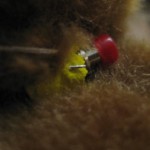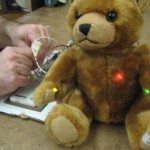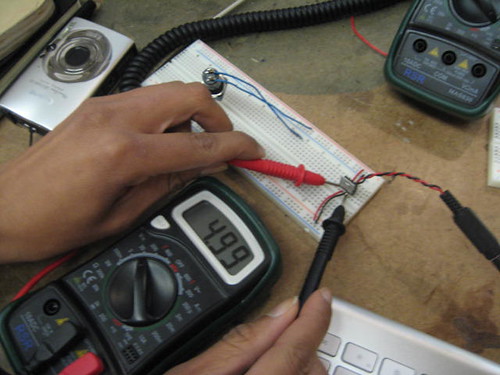I’ll start off by saying that I’m not sure why in the Preface Walter Benjamin makes a reference to Fascism. The early political reference gets me thinking that this is a political essay, rather than an essay about the changing nature of the relationship between art and audience.
In part I, Benjamin writes about the reproduction of art and how this act is not new within history. “Since the eye perceives more swiftly than the hand can draw, the process of pictorial reproduction was accelerated so enormously that it could keep pace with speech.”
Film’s impact on art in this case may be that it’s much easier for a the public to relate to film in comparison with the other examples given, engraving, etchings, painting, and lithography, because it appears to be created at the speed that life is experienced. He doesn’t quite make this connection in this section but in retrospect, it seems to be a point that is reiterated throughout the essay.
In part II, what I took to be a discussion on the provenance of a piece of art, I now think is more of a discussion on the significance of originality within art and how this significance affects the perception of art by the public. Furthermore, Benjamin gives examples of this significance of location by introducing the concept of “aura”, which I took to mean ‘uniqueness’. But, “aura” is also described as “the moment of awe seizing the first-time beholder of a singular work of art” (www.artintheage.com/about). I didn’t get that from the essay which compares the Greek perception of a statue of Venus as an object of veneration with the clerical interpretation of the same statue as an object of idolatry, at the point where “aura”, as a recurring concept, is introduced.
Shortly after aura is introduced, Benjamin discusses how mechanical reproduction, and I assume that at this point this reference is to mechanical reproduction on a mass scale, has transformed art production so it exists not for ritualistic purposes, but now exists for political functions. while it can exist for its own sake and
Throughout this essay, ritual and cult are used to refer to what have essentially been religious productions of art. If this were a less sophisticated piece of writing, I perhaps wouldn’t be so offended by the connotation he’s making, which seems to be that art for the sake of religion and worship is a bit of a fool’s pursuit. I’m not an entirely religious person. I just believe in tolerance. Cult is not lightly used term. I don’t think it’s changed much since 1936.
Anyway, Benjamin does semi-redeem himself by making the connection between “cult value” or “exhibition value” as stated in section V. In this case he’s relating the fact that works of art at an exhibition value, or works that have less of a unique cultural significance because they are reproductions, are more accessible. Works that have a cult value are less accessible, and he gives the example of a statue in a temple that is only viewed a few times a year, or viewers must make be within the temple itself in order to actually view the statue. While I’m not sure I would agree with the choice of terms, or perhaps I’m just disappointed because there’s no clarifying explanation, I do see his point. Yes, there are works of art that we place a higher level of sentimental significance to, and which are only seen at a special occasions. I’m not sure if the art of baking would count for Benjamin, but it is true that there are certain foods, like birthday cakes, that I only see a few times a year, particularly if I’m lucky enough to have a birthday party (with cake) on a particular year.
Benjamin also discusses cult in section X, where he relates the fact that the “cult” is now related to personality, which I also take to mean image. He also made a connection that being on camera for non-actors is like experience that same aura as the art itself, or the actors’ personality. I can see that this is true, and perhaps it explains why people go crazy to walk into the field of view in news reports.
In part VII, Benjamin makes the connection between film and hieroglyphs, as an example of pictorial language. I thought this was quite clever. I don’t know if film would be considered a pictorial language, but perhaps with so many films we are accustomed to moving pictures? I’m not sure….
In part VIII, I’m not sure that I followed the argument that because the film audience takes the perspective of the camera, then it also takes the perspective of a critic. Maybe, but there are still critics of plays, which is the alternative art (performance) form. I guess I didn’t see the strength of this argument.
In part IX, I think that Benjamin is making the connection that prior to film, or perhaps mechanical reproduction in general, art could could only take place in the setting in which it was created. Film is demonstrating that this is no longer the case, in that the audience and art are now separated, and time and place are no longer constraints. After this, the next few parts of the essay move fairly quickly. I’m not entirely sure of Benjamin’s point in part IX because he mentions “simultaneous collective experience” later in XII, where he discusses how a collection of people can experience a work of art differently for a painting than for a building. And, previously, part XI, Benjamin states that the painter and painting are more superficial to the experience of real life versus film which, like a surgeon, enters into the experience of life. He also mentions in part XIII that film allows us to experience familiar objects and movements in new perspectives.
Actually, I agree with his statements. Film (recording) does separate the ability for time and place to be constraints to a work of art. Further, it is true that the collective experience of a piece of art, such as that experienced by a movie audience, is different from that experienced by individuals at an art gallery. It is also true that film is a more realistic depiction of life. However, in part XV, Benjamin makes a distinction between architecture as a distraction, vs a piece of art that requires concentration. Again, maybe it’s just a word choice, but it seems that in this section, Benjamin is making the point that architecture is less significant than art that requires more concentration? It seems as if he’s saying that only if art requires concentration, and doesn’t include a specific part for distraction, then it’s not so important.
“Divertissement” in ballet is basically a short dance interlude that is included for no other reason than enjoyment and doesn’t really add to the plot. It literally translates to diversion in English, which seems in principle like distraction. Maybe it’s similar, but I think that Benjamin was pretty set on making a point here to worry much about exceptions to his essay, so ‘ll go on.
The last point I’ll make is Benjamin’s example of Dadaism as an example of art that is used to collectively shock the public. Yet another example of “simultaneous collective experience”. I think that he’s sort of using this to segue into his later paragraphs on the artistic beauty of war. I found those descriptions humorous, but bordering on inappropriate, unless he’s making a reference that war is a cult, and the many associations we make with war are also art.
If that’s true, I guess I can see his point. But, it’s a stretch.











